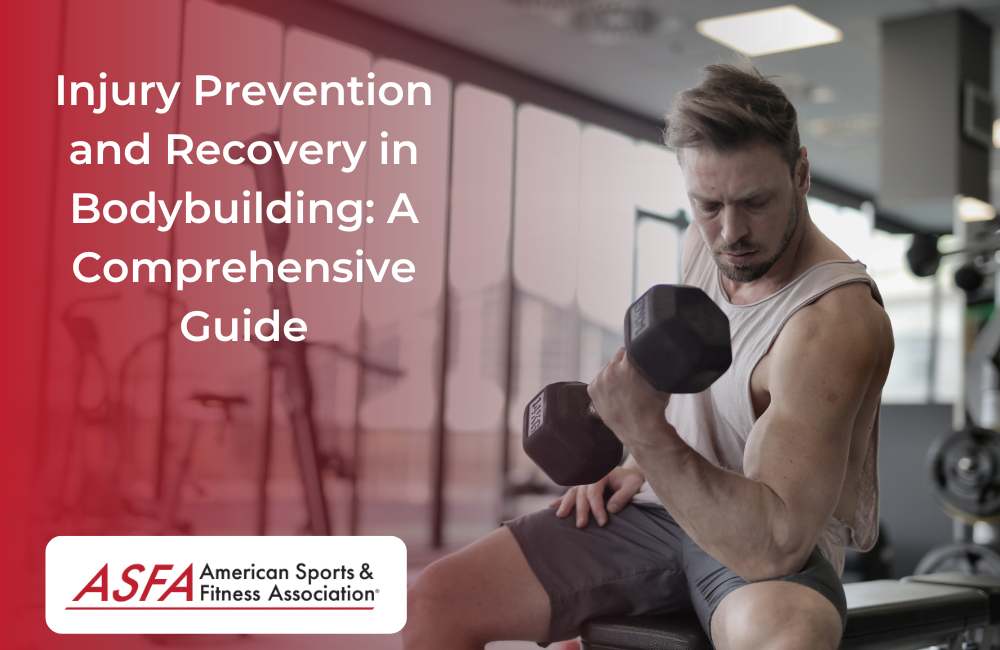
Bodybuilding Injury Prevention Guide: A Comprehensive Approach to Safe Gains
Bodybuilding, with its pursuit of enhanced muscle mass and physique, demands intense training and dedication. While the rewards are significant, the risk of injury is ever-present. Ignoring injury prevention can derail progress, leading to setbacks, pain, and even long-term complications. This comprehensive guide provides a detailed roadmap for minimizing injury risk and maximizing your bodybuilding journey’s safety and success.
I. Understanding the Common Injuries in Bodybuilding:
Before diving into prevention strategies, it’s crucial to understand the types of injuries common in bodybuilding:
-
Muscle Strains: These are the most frequent injuries, ranging from minor tears to severe ruptures in muscle fibers. Overtraining, improper form, and inadequate warm-up are primary culprits. Hamstring strains, quadriceps strains, and biceps strains are particularly prevalent.
-
Ligament Sprains: Ligaments connect bones and stabilize joints. Sprains occur when these ligaments are stretched or torn, often due to forceful movements or awkward landings. Ankle, knee, and shoulder sprains are common in bodybuilding exercises like squats, lunges, and overhead presses.
-
Tendonitis: This involves inflammation of tendons, the tissues connecting muscles to bones. Repetitive movements and overuse can lead to tendonitis, particularly in the shoulders (rotator cuff), elbows (tennis/golfer’s elbow), and wrists.
-
Joint Pain and Arthritis: Over time, the repetitive stress of bodybuilding can contribute to joint pain and even accelerate the development of osteoarthritis. Improper form, excessive weight, and neglecting joint mobility significantly increase this risk.
-
Muscle Tears: These range from minor fiber tears to complete muscle ruptures, often resulting from sudden, forceful contractions or heavy lifting with poor form. Bicep and hamstring tears are common examples.
-
Back Injuries: Compound movements like squats and deadlifts place significant stress on the spine. Incorrect form, improper lifting techniques, and insufficient core strength can lead to back pain, herniated discs, and other serious spinal issues.
II. Implementing a Proactive Injury Prevention Strategy:
A robust injury prevention plan encompasses several interconnected elements:
A. Proper Warm-up and Cool-down:
-
Warm-up (10-15 minutes): Begin with light cardio, like jogging or jumping jacks, to increase blood flow and body temperature. Follow with dynamic stretching, involving controlled movements through a joint’s full range of motion (arm circles, leg swings). This prepares muscles and joints for the demands of training.
-
Cool-down (5-10 minutes): After your workout, perform static stretching, holding each stretch for 20-30 seconds. This helps improve flexibility, reduce muscle soreness, and prevent stiffness. Focus on the muscle groups you worked during your session.
B. Correct Lifting Technique:
-
Mastering Form: Prioritize proper form over lifting heavy weights. Start with lighter weights to perfect your technique and gradually increase the weight as your form improves. Watch videos, consult trainers, and use mirrors to ensure correct posture and movement patterns.
-
Controlled Movements: Avoid jerky or ballistic movements. Maintain control throughout each repetition, focusing on the muscle group being targeted. Slow, deliberate movements reduce the risk of strain and injury.
-
Full Range of Motion: Perform each exercise through its full range of motion, ensuring complete muscle contraction and lengthening. Shortening the range of motion may reduce the effectiveness of the exercise and increase the risk of injury.
C. Progressive Overload:
-
Gradual Progression: Gradually increase the weight, reps, or sets over time. Avoid making significant jumps in intensity, which can overwhelm your muscles and joints. Listen to your body and adjust your training plan accordingly.
-
Adequate Rest and Recovery: Allow your muscles sufficient time to recover between workouts. Adequate rest is essential for muscle growth and injury prevention. Overtraining is a significant contributor to injuries. Aim for 1-2 rest days per week.
D. Strength Training for Supporting Muscles:
-
Core Strength: A strong core provides stability and support for your entire body during lifting. Incorporate core exercises like planks, crunches, and Russian twists into your routine.
-
Flexibility and Mobility: Regular stretching and mobility exercises improve joint range of motion and reduce muscle stiffness, minimizing the risk of injury.
E. Nutrition and Hydration:
-
Balanced Diet: Consume a balanced diet rich in protein, carbohydrates, and healthy fats to support muscle growth and recovery. Adequate nutrition is crucial for tissue repair and injury prevention.
-
Hydration: Maintain proper hydration by drinking plenty of water throughout the day. Dehydration can impair muscle function and increase the risk of injury.
F. Proper Equipment and Environment:
-
Appropriate Equipment: Use high-quality equipment that is properly maintained. Broken or worn-out equipment can significantly increase the risk of injury.
-
Safe Training Environment: Ensure your training environment is clean, well-lit, and free of obstacles.
G. Listening to Your Body:
-
Pain Management: Pay attention to your body’s signals. If you experience pain, stop the exercise immediately. Ignoring pain can lead to more severe injuries.
-
Rest and Recovery: Allow your body adequate time to recover. Don’t push through pain or fatigue. Rest is an essential component of injury prevention and muscle growth.
III. Seeking Professional Guidance:
-
Certified Personal Trainer: A certified personal trainer can provide personalized guidance on proper lifting techniques, exercise selection, and training programs. They can also monitor your form and identify potential risk factors.
-
Physical Therapist: A physical therapist can help with injury rehabilitation, improve mobility and flexibility, and provide preventative strategies.
-
Physician/Doctor: Consult a physician or doctor if you experience persistent pain or a significant injury. They can provide a proper diagnosis and recommend appropriate treatment.
IV. Conclusion:
Bodybuilding offers significant rewards, but prioritizing injury prevention is paramount. By diligently following the strategies outlined in this guide – proper warm-up and cool-down, correct lifting technique, progressive overload, strength training for supporting muscles, balanced nutrition, hydration, proper equipment, and listening to your body – you can significantly reduce your risk of injury and enjoy a long and successful bodybuilding journey. Remember, consistency and a commitment to safety are key to achieving your fitness goals while safeguarding your health. Don’t hesitate to seek professional help when needed; it’s an investment in your long-term well-being and bodybuilding success.



